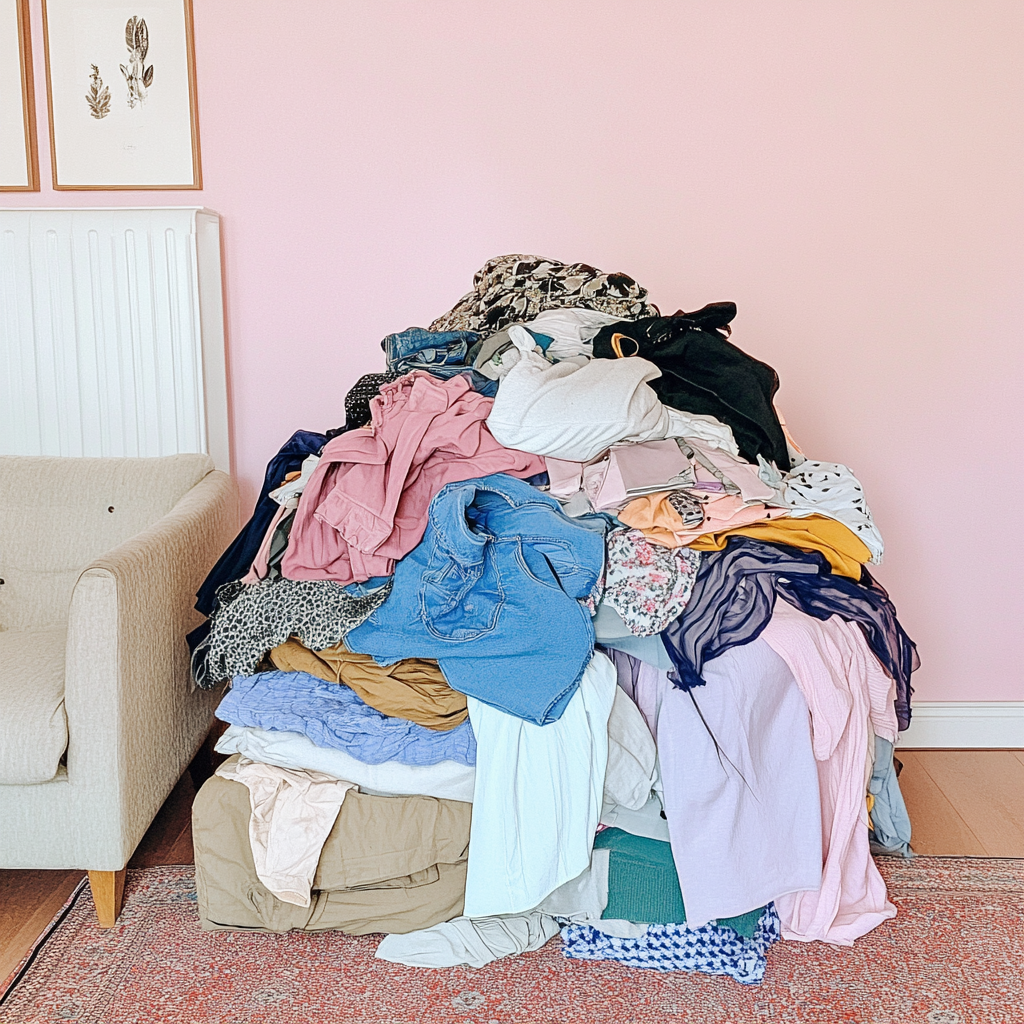Shein is Fast Fashion's Biggest Polluter
Shein nearly doubled its carbon emissions in 2023! In a fast-fashion industry already infamous for its devastating environmental impact, Shein has now claimed the top spot. In this blog post, we’re diving into how Shein has become the biggest polluter in fast fashion.
So how did Shein get here? And what does it mean for the future of fast fashion?
In 2023, Shein was everywhere. You couldn’t go on TikTok or Instagram without seeing people sharing their 'Shein hauls’, showing off super cheap clothes shipped straight from China to millions of homes in 150 countries. It’s trendy and affordable, and thanks to AI, it’s faster than ever. But this is causing big problems for the environment.
Shein emitted 16.7 million metric tons of carbon dioxide in 2023 alone. That’s more than four coal power plants produce in a year! And nearly half of Gen Zers in the U.S. buy from Shein monthly, fueling this giant's non-stop engine. But why is this new growth happening now?
Shein’s secret sauce has become AI—artificial intelligence that helps them churn out new designs and get products into your hands faster than anyone else. Some estimates say a new Shein design can go from concept to customer in just 10 days. And they’re adding up to 10,000 new items to their site every. Single. Day.
AI lets Shein predict exactly what’s trending and produce just enough of it to avoid stockpiling unsold items. Sounds efficient, right? But here’s the catch: that speed and efficiency come with a massive environmental and human cost.
Sure, AI can help reduce textile waste with the efficiency it can bring, but the problem is Shein’s core business model. Everything from air shipping tiny packages to textile waste and microplastic pollution from its clothes, Shein's impact is staggering. About 38% of Shein’s climate footprint comes just from transportation—mainly air freight. For context, the company reportedly shipped 900,000 packages to the U.S. daily this summer.
Then there's the issue of polyester. It's cheap, it's versatile, and it's everywhere. At Shein, 76% of their fabrics are made from this synthetic material, which sheds harmful microplastics into the environment every time it’s washed. Only 6% of that polyester is recycled, and the rest? Well, it's causing serious damage to our oceans and ecosystems.
Yet Shein’s sustainability report mentions their goal to cut carbon emissions by 25% by 2030 and reach net-zero by 2050. But how do they plan to do that when their emissions are skyrocketing, driven by the very business practices they rely on to stay on top?
Let’s not forget the human cost of ultra-fast fashion. While Shein claims they’re working to improve conditions for the factory workers who make their clothes, recent reports show that factory workers at Shein suppliers are still pulling 75-hour weeks- over a year after Shein promised to clean up their supply chain.
Even Shein’s own audits of over 3,000 suppliers found that 71% of them scored a 'C' or lower on labor practices—meaning things haven’t improved. Factory workers frequently face intense pressure to keep up with the demand for fast fashion, and the situation is only getting worse due to increased AI-driven demand for cheap, fast fashion microtrends.
The company reportedly offers as many as 600,000 items for sale at any given time with an average price tag of roughly $10. (Shein declined to confirm or deny these reported numbers.)
So, is AI the villain here? Not exactly. AI itself isn’t inherently bad. In fact, studies show it can help businesses become more sustainable by managing resources better and reducing emissions.
The real issue is how companies like Shein are using it. Their model is based on quick turnaround and mass production—and AI just makes that process even faster, with little regard for the environmental or human costs.
Other fashion brands use AI too, but their approach differs.
Most ship products in bulk, rely on ocean freight—much more sustainable than air freight—and operate warehouses in multiple countries, cutting down on transportation emissions.
Shein, on the other hand, is shipping individual packages from China to 150 countries. This 'on-demand' model might cut down on excess stock, but it’s far from sustainable. All of Shein’s 5,400 suppliers have access to an AI software platform that provides updates on customer preferences, and they change what they’re producing to match it in real time.
Now, Shein says it’s working on a 'decarbonization roadmap' to address its supply chain emissions and that it’s started to use more cargo ships, which are better for the planet.
But are these small changes enough when the business model itself is built on excess and speed?
AI could be a solution for fast fashion if it’s used responsibly, but as it stands, it’s only intensifying the harmful effects of Shein’s unsustainable practices. And until companies like Shein start fundamentally rethinking how they do business, we’ll continue to see emissions, waste, and exploitation rise.
So, what can we do as consumers? The easiest way to hit fast fashion where it hurts is to reduce demand. Support thrifting, upcycling, and supporting ethical initiatives to shift the market towards sustainability. But we also need to demand better from these companies—because they aren’t going to change unless we force them to.




